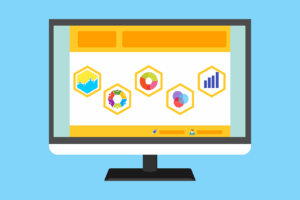Ever feel like your tech setup grew without you noticing? One day it was just a laptop and a couple of software licenses. Now it’s dozens of tools—some you don’t even remember signing up for.
You’re not alone. A recent SaaS index found that small businesses with fewer than 500 staff use, on average, 172 cloud apps. And many don’t even have an IT department to keep things straight.
That’s a lot of moving parts. Without a plan, those parts often work against each other. Systems don’t talk. Staff invent clunky workarounds. Money gets wasted on subscriptions that don’t help growth. That’s why every small business today needs an IT roadmap.
Why an IT Roadmap Isn’t Optional Anymore
Not long ago, IT was seen as “background support”—keep the lights on and fix things when they break. Now? Technology sits at the centre of sales, service, marketing, and reputation. When the tech stalls, so does the business.
The risk isn’t just downtime. It’s:
- Security gaps waiting to be exploited.
- Money wasted on licenses no one uses.
- Systems that buckle when you try to grow.
- Customer delays that leave a bad impression.
Sound familiar? The question isn’t whether you need an IT roadmap—it’s how fast you can put one together.
How to Build a High-Impact IT Roadmap
An IT roadmap is more than a list of tools. It’s a plan that connects your business vision with your technology—and keeps both evolving together. Here’s how to build one that works.
1. Start With Business Goals
Before talking hardware or software, figure out your priorities.
- Are you trying to streamline operations?
- Shorten sales cycles?
- Expand into new markets?
Bring in voices from sales, marketing, finance, and operations too. When everyone buys into the “why,” adoption of new tech is much smoother.
2. Audit What You Already Have
When was the last time you looked at your tech stack properly?
- Spot unused or duplicate tools.
- Check for critical apps that are out of date.
- Ask: do staff actually use this tool—or just tolerate it?
Sometimes the fix is training. Other times, it’s clear you’ve got a gap that needs filling.
3. Identify and Rank Your Needs
Not every problem needs fixing today. Rank them:
- What slows you down daily?
- What tools will deliver ROI fastest?
- What’s just “nice to have”?
Focus first where improvements make the biggest impact.
4. Budget Beyond the Price Tag
The sticker price of software is only part of the cost. Factor in:
- Implementation
- Training
- Ongoing maintenance
- Possible downtime during rollout
Ask yourself two questions:
- Can we afford it now?
- Can we afford not to have it?
That second one often gives you the real answer.
5. Map the Rollout
Even the best tool can flop if it’s dropped in without a plan. Build a rollout that covers:
- Who owns which step.
- Key milestones and deadlines.
- Training—before the launch, not after.
6. Reduce Risk and Choose Vendors Wisely
Compatibility issues, migration snags, staff resistance—there are always risks. Good vendor support makes or breaks the rollout.
- Test responsiveness before signing.
- Ask peers for feedback.
- Choose vendors who’ll be there when things get messy.
7. Review and Revise Regularly
Your business changes, the market changes, and tech changes faster than both. Treat your IT roadmap as a living document.
- Review it quarterly.
- Check ROI and adoption.
- Drop what’s outdated and double down on what works.
Skip this step, and you’ll be back to making ad-hoc decisions—the very thing the roadmap was meant to prevent.
Turn Your IT From Patchwork to Growth Engine
At its core, an IT roadmap connects your goals, technology, and people so they all work toward the same outcomes. Done right, it:
- Keeps IT spending focused.
- Prevents redundancy and waste.
- Streamlines operations and customer experiences.
- Positions you to adapt and scale quickly.
The payoff? A stronger competitive edge and fewer nasty surprises as you grow.
And here’s the thing—you don’t need to get it perfect from day one. Start small: set a goal, take inventory, and map your next few steps. That shift from reaction mode to intentional action is where the real wins start.
Every day without a roadmap is another day your tech could be working harder for you.
Want help building one? Our Managed IT Services give small businesses in Brisbane and Mackay the support they need to turn patchwork systems into a future-ready setup. Contact us today, and let’s get your roadmap working for you.
—




